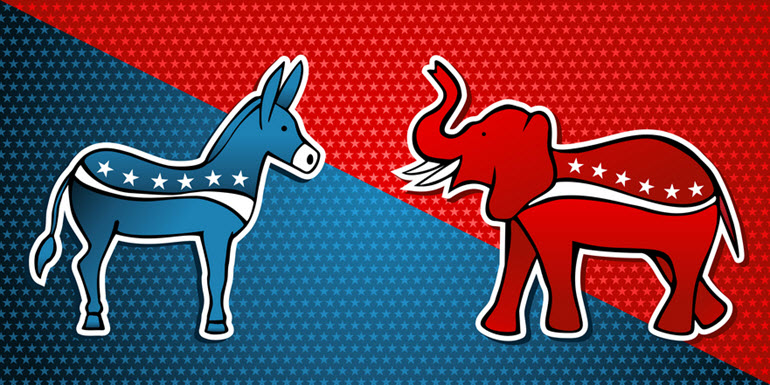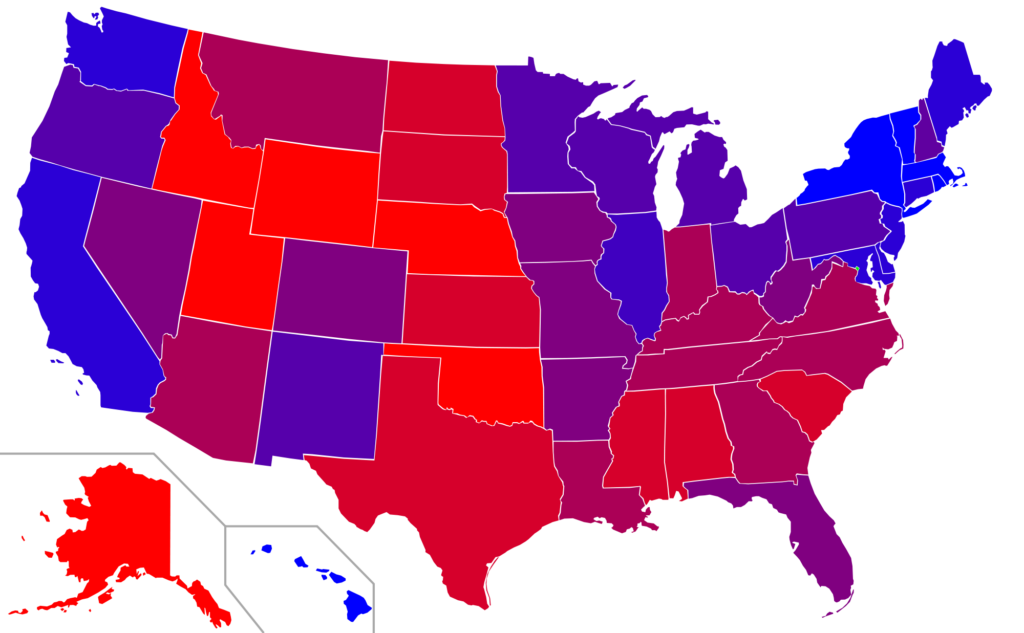Kevin Glass: The next battlegrounds for school choice: stubborn red states

The sweeping successes of Republicans nationwide in the 2016 elections presents a huge opportunity for the school choice movement. Republicans have historically been more friendly to school choice than Democrats, and they now have 33 governorships and full control of 32 state legislatures. Unfortunately, Republican control doesn’t always equal the best outcomes for students. In places like Texas and Mississippi, hundreds of thousands of students sit on waitlists for choice programs despite Republican control in both of those states. “Mississippi is a little late to the school choice dance,” education activist Kevin Chavrous said, according to Mississippi Watchdog. The state has a choice program, but that “only a small percentage of Mississippi students are able to take advantage, and opportunities need to be expanded.” Reformers there are working with legislators. Watchdog Texas reported that the state “remains a laggard” in this important area, and that the Republican speaker of the house has been an opponent of expansion of school choice programs. The status quo policies are what keep a reported 120,000 students on waitlists to get out of failing public schools. At the very least, education reformers may soon have less opposition from the federal level to their reform efforts. President Trump’s nominee for secretary of education, Betsy DeVos, has been a supporter of choice programs across the country, from charters to education savings accounts to opportunity scholarships. The federal government does not and should not have power over state and local education authorities when it comes to school choice, but it’s still comforting to know that the Department of Education won’t be getting in the way. It’ll be a welcome change from the previous administration, which frequently paired noble goals with questionable tactics. The Obama Department of Education’s school choice policy was frequently paired with strings attached that made many of them unsustainable. The capacity for choice programs has increased in the last few years, but not by nearly enough to keep up with the incredible demand. And, hopefully, a Republican administration will be able to stop the shameful shuttering of choice programs that occurred during the Obama administration. Parents want more choice, as evidenced by the near-record waitlists for choice programs around the country. While there has been progress made in freeing parents and students from ZIP code determinism in recent years, a lot of progress still remains, as evidenced by Texas and Mississippi. A new year after a big election, however, means that opportunities exist nationwide. ••• Kevin Glass is director of outreach and policy at The Franklin Center and was previously managing editor at Townhall.
Daniel Sutter: Red states, blue states: one nation, or two?

A group called Yes, California is trying to get a secession referendum on the 2018 ballot, what has been labeled “Calexit.” Secession faces long odds, even if Californians get to vote. California is not the first state to recently consider secession. Secession petitions circulated in every state after the 2012 election. Over 125,000 signatures were collected in Texas, where the Texas Nationalist Movement is now pushing “Texit.” Donald Trump’s election in November sparked protests across the nation, with protesters using the Twitter hashtag #notmypresident. Many Blue state liberals seem unwilling to accept Mr. Trump’s election. This perhaps should be no surprise, as many Red state conservatives never accepted Barrack Obama’s presidency as legitimate. Delegates to the 2016 Republican National Convention chanted “Lock her up,” about Democratic nominee Hillary Clinton. An August 2016 poll found that 40% of Texans would favor secession if Ms. Clinton were elected. The secession movements represent a logical extension of the growing Red versus Blue state chasm in American politics. Is the political divide approaching the point where America can no longer be one nation? And if so, what would be the consequences? Secession offers a policy advantage. Many laws and policies must be the same for everyone within a nation. America has one president: Ms. Clinton cannot be Democrats’ president, with Mr. Trump governing Republicans. Social Security either exists or does not exist. Separate Blue and Red “nations” could set their own policies, reflecting divergent values. Despite the nastiness of American politics, neither liberals nor conservatives today are realizing their ideal policies. The Affordable Care Act is not government-run healthcare, while a $15 minimum wage has no chance of approval by the Republican congress. Fiscal conservatives fear that Social Security and Medicare will bankrupt the nation, and yet reform does not happen. Secession offers perhaps the only hope for either liberals or conservatives to experience a government approaching their ideal. Neither side seems likely to force its vision on the other, leaving both continually disappointed with compromises. What about the consequences? America has enjoyed both economic and political benefits from being one nation. The economic benefits arise from the freedoms to trade and move within our nation’s borders. Economist Adam Smith recognized how the division of labor drove the massive increases in productivity during the Industrial Revolution, and that a larger market allowed for a more extensive division of labor. The U.S. has benefited from being a single large market, relative to the nations of Europe. The U.S. also experienced domestic peace, with the exception of the Civil War, in contrast with the wars plaguing Europe for centuries. America could maintain a tiny peacetime military and invest in building our economy. Peace also encourages economic integration, since the disruption of an extensive division of labor has terrible consequences. America’s unity and the ensuing economic and political benefits were, I think, a consequence of America’s founding on the principle of freedom. America’s founders fought for independence from England and then established a constitutional republic to realize individual freedom. This idea was powerful enough to eventually end slavery and to bring freedom to all Americans. Perhaps the biggest question that Calexit and Texit raise for Americans is whether we still share a common vision of the good society, and consequently are willing to live with our differences. Allowing states to make more policy choices through federalism can accommodate differences among us. America’s founders established a federal republic, but today federalism is largely dead, I think at least partly because people are unwilling to tolerate violations of fundamental human rights. If health care or gun ownership are inalienable rights, it seems unreasonable to allow states to trample these rights. California secession is highly unlikely in the near term. But if Calexit prompts Americans to recognize that we no longer want the same things and are unwilling to tolerate our differences, secessionist movements will continue to emerge in the future. ••• Daniel Sutter is the Charles G. Koch Professor of Economics with the Manuel H. Johnson Center for Political Economy at Troy University and host of Econversations on TrojanVision. The opinions expressed in this column are the author’s and do not necessarily reflect the views of Troy University.
Daniel Sutter: The economic performance of blue and red states

The Red vs. Blue state divide has driven national politics since the realignment of Southern states from Democratic to Republican. Because Republicans generally favor lower taxes and less regulation, the performance of Republican-dominated Red states offers evidence on whether smaller government is better for the economy. The results are surprising, but ultimately illuminating. To approach this, one first must classify states as Red or Blue. This is typically done based on voting in recent presidential elections. I like to use the average vote percentage of the Democratic candidate in the past four elections (back to 2000). This measure yields no real surprises: states like Alabama and Mississippi are Red, while California and New York are Blue. Possibly the best single economic performance measure is median household income, tabulated by the Census Bureau. When we compare states, the results are clear: Blue states outperform Red states. Income averaged across states was $62,000 in 2014 in the 13 “bluest” states, versus $53,000 in the 13 “reddest” states (including Alabama). Liberal bloggers claim such numbers prove low taxes do not grow the economy. These numbers clearly question the economic benefits of limited government which I often promote here. But I emphasize economic freedom, not party labels. Democrats and Republicans have made policy changes increasing (and decreasing) economic freedom. For example, President Carter deregulated trucking, railroads, and the airlines; while President Ronald Reagan lowered the top Federal income tax rate from 70 percent to 28 percent. Divided government under Presidents Bill Clinton and Barack Obama helped to hold federal spending in check. In addition, both current and past economic freedom — good and bad policies from 10, 20, or even 50 years ago — affect performance today. Businesses face significant costs to move their operations and will not move immediately if taxes rise. Many industries also cluster geographically, with financial institutions in New York, automobiles in Detroit, and high tech in Silicon Valley. Industry clusters often persist even if government policies become quite unfriendly for business, and do not spring up immediately upon adoption of better policies. Furthermore, economic freedom is not the only thing that people (and consequently firms) value. Economist Richard Florida, who has extensively studied regional economies, once noted the large number of four-star restaurants in California’s Napa Valley, in the heart of wine country. This concentration was driven by the desire of superstar chefs to live in northern California, not economics, since the competition hurts the profitability of each restaurant. People decide where to live and work based on things like climate, outdoor recreation (beaches and mountains), and the vitality and diversity of mega-cities, not just taxes and the ease of starting a business. So Blue states could readily have higher incomes today even if limited government is better for business. A more revealing analysis asks if Blue states with the most economic freedom are more prosperous, and similarly for Red states. The freest states among both groups, based on Economic Freedom of North America scores today and back to 1981, are indeed more prosperous. Median incomes are 15 percent higher in the most-free versus the least-free Blue states, and 6 percent higher in the freest Red states (25 percent if you don’t include Alaska). Indeed, I think politicians sometimes exploit local amenities to impose otherwise unacceptable tax and regulatory burdens. Lawmakers recognize people will pay high taxes to live in New York, Los Angeles, or San Francisco. But decades of poor policy — California and New York have the least economic freedom today — have taken their toll. Income in New York is only 10 percent above the national average. Economic freedom contributes to prosperity, but is not the only thing that matters in life. Freedom becomes more important because it is what policymakers can change today. We cannot undo bad policies of yesterday or duplicate California’s Pacific coast or the dynamism of New York City. We should focus on what we can control that matters, namely economic freedom. ••• Daniel Sutter is the Charles G. Koch Professor of Economics with the Manuel H. Johnson Center for Political Economy at Troy University and host of Econversations on TrojanVision. The opinions expressed in this column are the author’s alone and do not necessarily reflect the views of Troy University.


